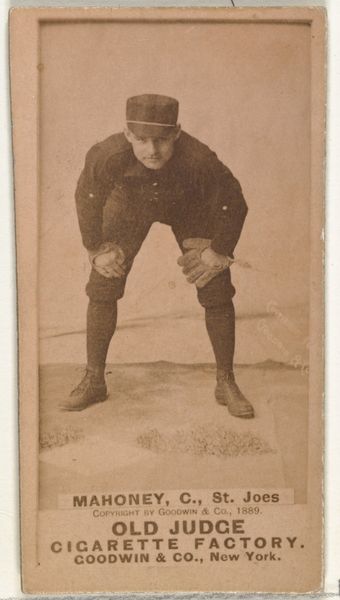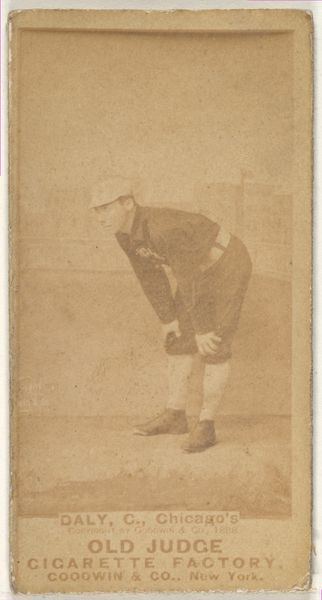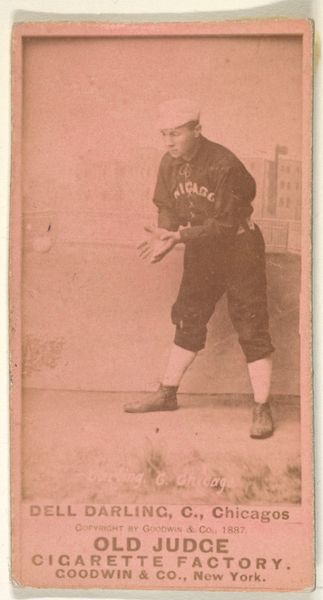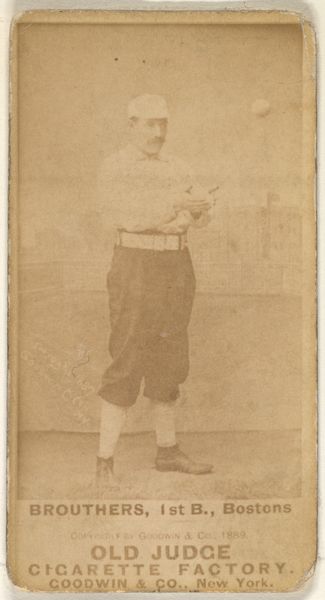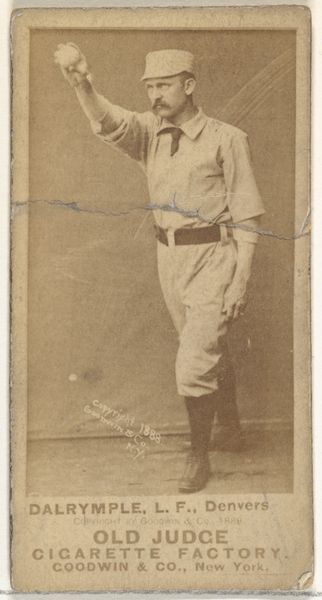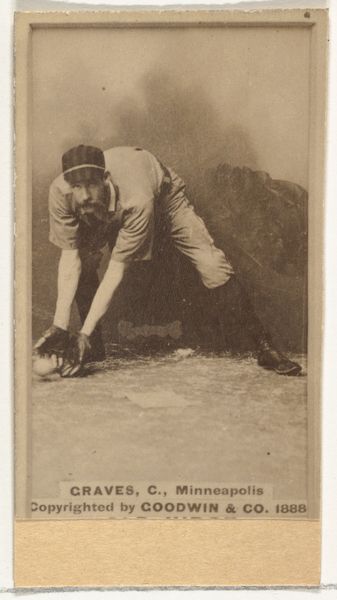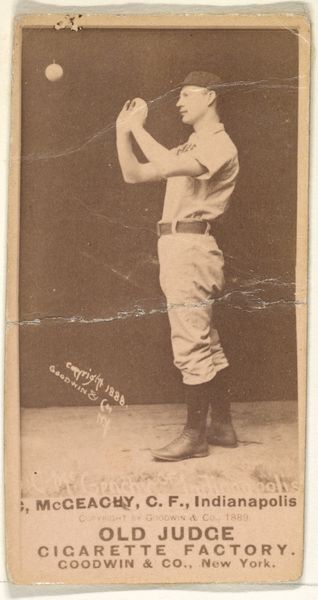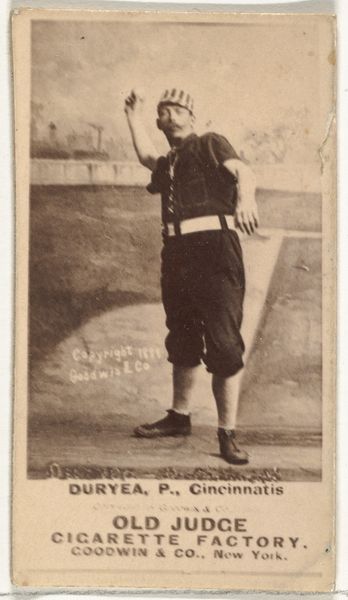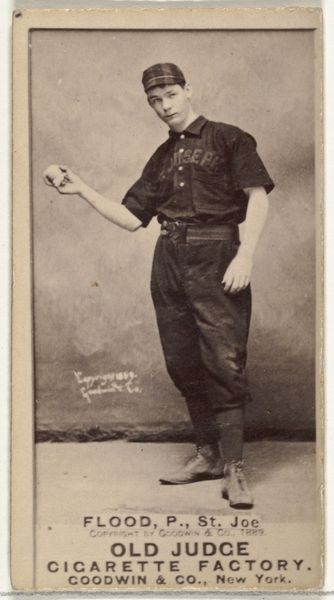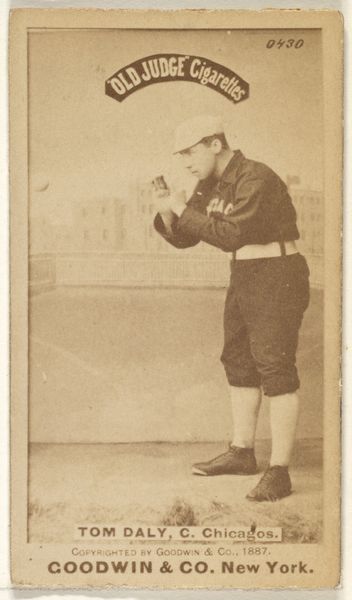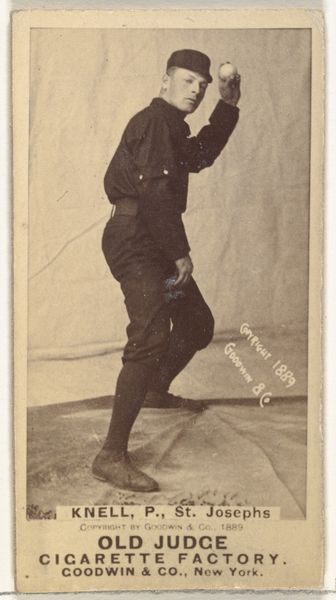
Ervin Duane "Jim" Curtiss, Right Field, St. Joseph Clay Eaters, from the Old Judge series (N172) for Old Judge Cigarettes 1889
0:00
0:00
print, photography
#
portrait
# print
#
baseball
#
photography
#
genre-painting
Dimensions: sheet: 2 11/16 x 1 3/8 in. (6.9 x 3.5 cm)
Copyright: Public Domain
Editor: This is a photographic print from 1889 featuring Ervin Duane "Jim" Curtiss of the St. Joseph Clay Eaters. It feels like a very posed, stiff portrait despite him being in the middle of what I assume is a baseball game, right? What is your take on this piece? Curator: I see a really fascinating tension here. On one hand, you have the supposed candidness of a genre scene capturing a moment of athleticism. But look closer. The very production of this card, part of a larger set to promote 'Old Judge' cigarettes, tells a different story. Consider the exploitation inherent in the commodification of sport, and particularly of individual athletes, right at the cusp of modern commercialism. What stories about labor and leisure do you think are intentionally masked here, and perhaps unintentionally revealed? Editor: Masked stories? You mean, like the context around cigarette ads using baseball players? Curator: Exactly! The rise of mass-produced cigarette cards coincided with both increasing industrialization and a growing awareness of public health issues. Cigarette companies like 'Old Judge' were shrewdly associating their products with wholesome American ideals – sports, masculinity, success – precisely when anxieties about those ideals were on the rise. Editor: So, the image normalizes something potentially harmful, and it's all tied into advertising. It's a very calculated representation, far from a simple snapshot. Curator: Precisely. We have to think about what is emphasized but also what's left unsaid. How does understanding the societal implications around consumer culture in the 19th century impact our perception of Jim Curtiss's individual agency? It pushes us to look beyond just the baseball player, right? Editor: I'm starting to see it more as a statement of those societal values than a portrait of Curtiss himself. Thanks for providing this deeper reading into the image. Curator: It’s a start. These kinds of images, seemingly simple, are often loaded with complex messages and power dynamics that demand unpacking.
Comments
No comments
Be the first to comment and join the conversation on the ultimate creative platform.

